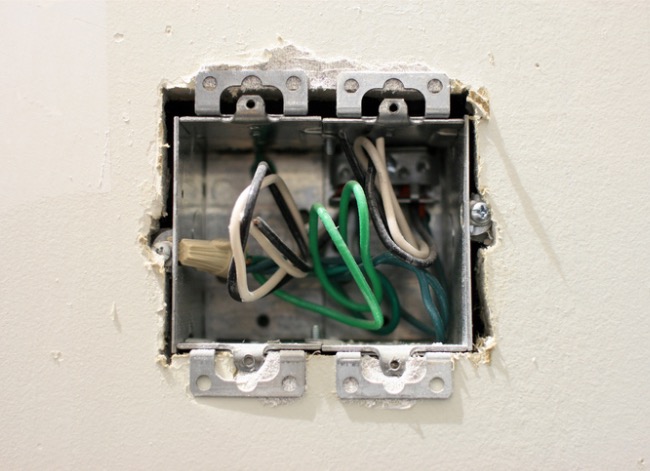We may earn revenue from the products available on this page and participate in affiliate programs. Learn More ›
Although it’s easy to wire a light switch, you need a basic understanding of how electricity works in the home in order to do the job safely. If you’ve never before worked with wiring, consider hiring an electrician and asking then if you can watch while they work so you can learn how to hook up a light switch the correct way. Once you’ve learned how, it may take no more than 10 minutes to wire a light switch. No specialized tools are required, and the steps are the same whether you are replacing a damaged switch or upgrading to a dimmer.
Before You Begin Wiring A Light Switch
In a residential setting, electrical power comes into the home and is distributed via a service panel. This panel is comprised of individual breakers that divert electricity to various circuits. All circuits start at the service panel and carry electricity through cables to switches and outlets and then back to the service panel.
Within the cables are wires designated to do different jobs: Some supply electricity to the switches while others carry the electricity back to the service panel. Still others act as safety mechanisms to reduce the risk of electrical shock.
The good news is that you don’t need to know advanced circuitry in order to replace a light switch. You just have to disconnect the wires from the existing switch and connect them—in the same manner—to the new switch. The following basic light switch wiring how-to outlines the steps to wiring a light switch, both for single-pole switches and 3-way switches.
Tools & Materials
Bobvila.com may earn a commission from purchases made through these links.
- Single-pole light switch (optional)
- 3-way light switch (optional)
- Electrical tape (for 3-way switches)
Light Switch Wiring Safety Precautions
When it comes to home wiring, the best rule of thumb is that if you don’t feel comfortable working with electrical wiring, just don’t do it. If you take the right precautions, replacing a light switch is generally safe and low-risk because you’re manipulating wires that have already been professionally installed. DIYers should not, however, try running new wiring themselves—that’s a job for an electrician. The following steps will help you replace old switches with new ones to update their appearance and function.
How to Wire a Single-Pole Light Switch
Tired of your almond-colored toggle light switches, and want to update them with more modern screwless wall plates and rocker switches? This is a simple job for a DIYer, given that you work carefully and follow basic safety protocols.
STEP 1: Disconnect the power source.
It is vital to complete this first step correctly. Skipping this part or doing it incorrectly could be fatal.
Before you do anything else, ensure that no power is running along the circuit that you’ll be working on. That means going to the breaker box and switching off the breaker that controls the switch you intend to replace.
To be on the safe side, test the switch to make sure it no longer turns the light on. Sometimes breakers are mislabeled, so double-check before moving on to the next step.
STEP 2: Remove the old light switch.
Once you are positive that power has been cut to this particular switch, unscrew the switch plate (most are secured with two small flathead screws), then unscrew the old switch from the wall (here, flat-head and Phillips-head screws are equally common). Carefully pull out the old switch but leave the wires connected for now.
RELATED: Solved! How High to Install a Light Switch
STEP 3: Identify the terminal and ground wires.
Observe the layout of the wires.
- You should see two black wires, each connecting to a different screw on the side of the switch. These are called terminal screws.
- You will also see two white (neutral) wires that connect to one another in the box. The connection should be covered with a wire nut.
- You should also see three green or bare copper wires. These are ground wires.
All three wires will connect in a single wire nut, and the shortest one will connect to a green screw on the light switch.
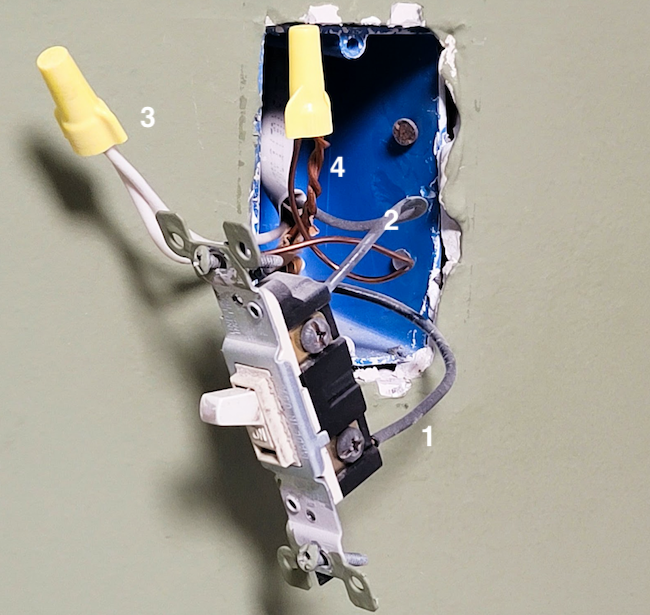
STEP 4: Disconnect the terminal and ground wires.
Loosen the screws holding the terminal wires in place. Once done, free the terminal wires, using pliers if necessary, to undo a tight coil. Likewise, free the ground wire. At this point, you should be able to remove the switch from the wall. If it makes your job any easier, go ahead and bend the dangling wires out of the way.
STEP 5: Check the wires for any signs of damage.
Examine the ends of the wires for evidence of fraying. Clip off any degraded portions with a multi-tool or wire cutters. Remember to leave about a half-inch of wire exposed on each length.
Because electrical wires experience stress over time and can weaken with usage, you must ensure that when the wires are reattached to the replacement switch, any portion of the wire that makes contact with the screws is undamaged.
STEP 6: Connect the wires to the new switch.
Use a multi-tool or pliers to bend each exposed wire into a round hook. Try to round those hooks tightly enough so they fit snugly around the curve of the screws on the replacement light switch. Knowing how to wire light switch terminals correctly ensures a fully functional switch.
Next, attach the hooked ends of the wires to the new switch. Start with the black wires, connecting them to the terminal screws on the right side. Their hooks should be oriented in a clockwise position. Proceed to attach the green wire, also called the ground, to the screw on the left. You may find that needle-nose pliers, though not essential, can help keep the wires in place as you tighten each screw.
RELATED: How to Splice Wires for Home Electrical Projects
STEP 7: Reattach and cover the wires with the switch plate.
Protect the switch from fires by wrapping electrical tape around the body and the terminal screws. Finally, screw the switch back into the wall, replace the switch plate, and turn the circuit breaker back on.
STEP 8: Test the light switch wiring.
If you’ve wired the switch correctly, the light should come on when you flip the switch. If it doesn’t, the problem is likely a loose connection.
Turn the breaker back off, inspect the wires to see if each is firmly connected to its terminal, and then remove the wire nut from the neutral (white wires) and check to ensure they’re firmly twisted together, so they’re making a good connection. Replace the cover, turn the breaker on, and flip the light switch again—it should come on.
That’s it—you’re done. Now let the light shine on!
How to Wire a 3-Way Light Switch
Sometimes it’s impractical to have just one switch for a light, and in these cases, using two 3-way switches can be helpful. For example, two 3-way switches make it possible to turn on a stairway light from either the top of the stairway or from the bottom.
Replacing a 3-way switch is just as straightforward as replacing a single-pole switch, but you’ll find more wires in the box. Since the two switches will both control the light, they need extra “traveler” wires connecting the switches to one another. Read on to find out how to keep the wires straight, how to figure out where they connect to the new switches, and how to wire switches.
RELATED: The Best Motion Sensor Light Switches
STEP 1: Disconnect the power source.
Locate the breaker that serves the switch. In many homes, a single breaker (in the service panel) will power an entire room so that the breaker may be labeled something like “Master bedroom” or “Upstairs hallway.” After flipping the breaker off, always test the switch to ensure the power to it is really off.
STEP 2: Remove the switch.
Use a screwdriver to loosen the two screws that hold the switch plate in place and set it aside. Then, use a screwdriver to loosen the top and bottom screws that hold the actual switch in place. Once the screws are out, you’ll be able to pull the switch out a couple of inches to see and work with the wires.
STEP 3: Identify the wires.
Two different types of wire cables are used in a 3-way switch. A standard 14:2 cable that contains a white wire, a black wire, and a ground wire, carries power from the breaker to the switch box. A 14:3 cable with a black, white, red, and ground wire connects the first switch to the second switch and also to the light.
The most common way (not the only way) to wire a 3-way switch is to run the wires from the first switch to the light and then to the second switch. Replacing a 3-way switch in this wiring configuration is covered in the following steps. However, if you open the switch boxes and find a different wire configuration, you can still replace the switches using the general method described here.
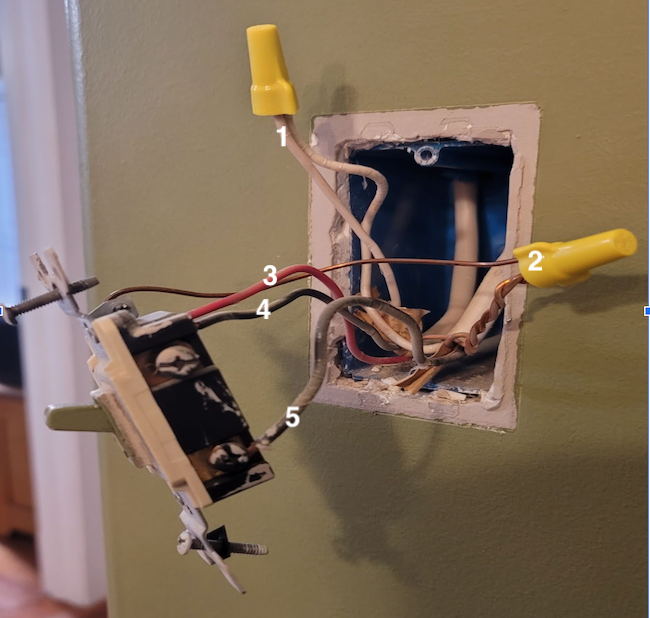
STEP 4: Label the common wire in the first box.
In the first switch box (the box where the power comes in), you’ll see eight wires. Two white (neutral wires) will be connected and covered with a wire nut. A black wire will be connected to a black or copper screw terminal—this is the “common” wire—and you must distinguish it from the other wires. Put a piece of electrical tape on the common wire before disconnecting it, so you know it’s the common wire. Don’t skip this step!
You will also see three ground wires connected within a single wire nut, and you will also find an additional black wire and a red wire—these are the traveler wires that connect to the light and to the second switch.
STEP 5: Identify the wires in the second box.
With this wiring configuration, you’ll only find four wires in the second switch box, a black wire, a white wire, a red wire, and a ground wire. The white wire is not neutral in this switch but rather is used as a hot wire. It should either be labeled with some black electrical tape or black paint to signify it’s a hot wire. The black wire in the box is the common wire, and it runs to the common terminal. Go ahead and label this common wire as well to help keep it straight.
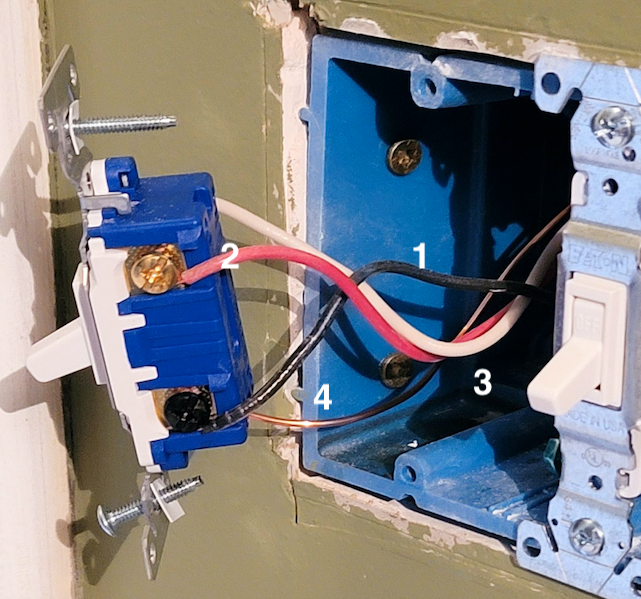
STEP 6: Disconnect the wires.
Once both common wires are labeled, use a screwdriver to loosen the terminal screws and remove the wires attached to them. For the wires that are connected to one another and covered by wire nuts, simply twist off the nuts to reveal the bare wire ends. Now, you’re ready to install the new switches.
STEP 7: Wire the new switches.
Examine the switches—when installing new 3-way switches, always use the identical type for both switches. Terminal configuration can vary by brand, which can make installation confusing.
- First, connect the common wires to the common terminals labeled on both new switches. If the terminal isn’t labeled as “Common,” it will have a black or copper terminal on the bottom side of the switch.
- Then, connect the red wire to a terminal on the top side of the switch. Red is a traveler wire and can be connected to the left or the right upper terminal. It doesn’t matter as long as you do it the same on both switches. So, if you connect it to the upper right terminal on one switch, connect it to the upper right terminal on the other switch.
- Connect the second traveler wire to the terminal opposite the red wire terminal. In the first box, this will be the black wire that you did not label as common. In the second box, this is a white wire with black paint or tape that indicates it’s being used as a hot wire.
- Connect the white neutral wires in the first box to one another by twisting them together and securing them with a wire nut.
- Twist the three ground wires together in the first box and secure them with a wire nut. Then, connect the end of the shortest ground wire to the green terminal on the switch.
- Now, only the ground wire in the second box is left to connect—attach it to the switch’s brass or green terminal screw.
STEP 8: Replace the covers and test the switches.
Once the wires are connected, secure the switches using two screws to the switch box and replace the switch plates. Flip the breaker that supplies power to the switches and test each switch by alternately turning one on and then the other one. Either switch will turn the light on or off, so the switch may be in either the up or down position to operate the light.
If the light doesn’t come on there could be a loose connection. Check to ensure that the wires are firmly attached to their respective terminals and that the white neutral wires in the first switch box are tightly twisted and covered with a wire nut.
RELATED: How to Replace a Light Switch
Final Thoughts
Wiring a switch is a relatively simple project, as long as you’re replacing existing switches with new ones. However, adding wiring for new switches is a job for a licensed electrician. DIYers should have at least some knowledge and experience with connecting light switch wires, and the focus must always be on safety. Never attempt to remove a switch until you’re sure the power is shut off.
Wiring 3-way switches may seem more complicated at first but, like single-pole switches, it’s all about getting the wires in the same configuration on the new switches as they were on the old switches. Labeling the common wires in 3-way switches simplifies the process.
Homeowners may find different wiring configurations in the switch boxes, which indicates the power source is entering the circuit in another spot—usually through the light. By labeling the common wires, and connecting the traveler wires to identical terminals on both switches, virtually any wiring configuration can be duplicated.
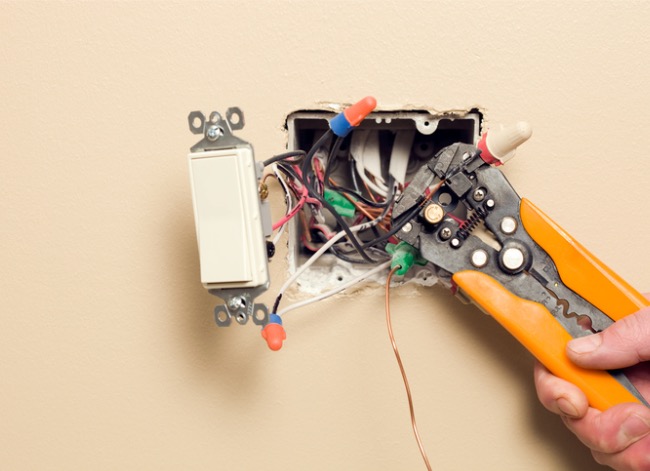
FAQs About Light Switch Wiring
For those wanting to replace existing switches, either single-pole or 3-way with newer switches, wiring is relatively simple. However, all electrical wiring projects come with a degree of shock and fire risk, so connecting the wires must be exact. For those considering replacing either type of switch, some questions are to be expected.
Q: What happens if you wire a switch backwards?
If you wire a single-pole switch wrong, the light won’t come on at all. If you wire a 3-way switch wrong, you may be able to turn the light on from one switch, but not the other. It’s important to review how to wire a switch before attempting this project.
Q: Can wiring a light switch wrong cause a fire?
Yes. Loose wires can overheat and arc, which can cause a fire. If you have any doubts about your DIY wiring capabilities, ask an electrician to do the wiring.
Q: How do you wire a 3-way light switch?
Replacing an existing 3-way switch with a new model is a straightforward task, and you’ll need to mimic the wiring configuration on the current switch when connecting the wires to the new switch. See above for complete steps.
Q: Can I wire an outlet from a light switch?
It may be possible if the box is large enough (20 cubic inches) and contains two neutral wires. However, this is a job for a licensed electrician because it involves knowing how much electrical load is already on the circuit and whether it’s adequate for adding an outlet.

